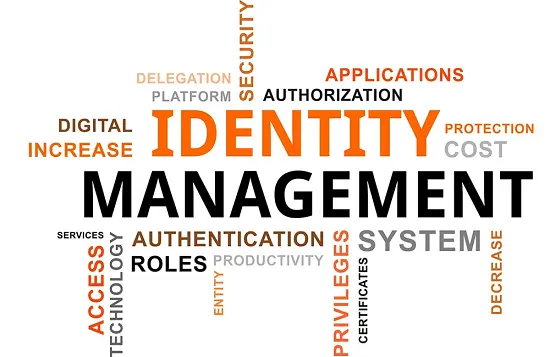WHAT IS IDENTITY MANAGEMENT?
Now that remote working has become the norm and mobile device usage is at its peak, the domain of identity management has significantly grown. Unsecured networks, coupled with unique user expectations created an inflow of new device connections, a surge of requests for remote access to sensitive information, and the threats of attacks.With the arrival of identity management, companies are able to safeguard their most valuable resources. This allows IT administrators to delegate a single digital identity management to each individual, authenticating them when they log in, enabling them to access specified resources, and monitoring and managing those identities throughout their lifecycle.

What Is IDENTITY MANAGEMENT?
Identity management enables individuals to access technology resources. It identifies, authenticates, and authorizes a user to perform actions or configure applications, systems, or networks. This is carried out by associating user rights and restrictions with user’s established identities.
The main objective of identity management is to guarantee that only authorized users will be granted permission to specific systems. This involves control over the onboarding of new users (whether employees, partners, clients, and stakeholders), modifying network permissions for existing users, and the off boarding of users who do not need access to the systems anymore.
ID management also sets the level of access management and permission of a user on a specific system. For example, a user may be authorized to use an application but may be restricted from its other components.
Identity management works together with access management systems – with the former focusing on authentication and the latter leaning towards authorization.
What is Digital Identity Management?
Digital identity management of a user is created once it is registered in a system. During this phase, specific attributes are gathered and stored in a database. The registration and the number of attributes to process may vary depending on the type of digital identity management that is supposed to be granted.
The electronic identity (eID) handed out by an official center will undergo a complex process of compilation and treatment. This is totally different from the registration done in a social network, where people can provide untruthful identity attributes that cannot be verified.
WHAT IS IAM (Identity and Access Management) SOLUTIONS IDENTITY MANAGEMENT?
IAM solutions may come in the form of different components and systems such as:
1. Single Sign-On
Single sign-on (SSO) is a type of access Management and control that enables users to log in with just one set of credentials to any independent yet related software. The application or website that the user accesses relies on a third party to verify user reliability. This streamlines password management, limits credential usage, improves identity Management protection, and minimizes security risks.
2. Multi-Factor Authentication
Multi-factor authentication confirms a user’s digital identity management by asking them to enter multiple credentials such as password, a code or one-time password (OTP) sent to the user’s email or phone number, or a biometric recognition.
3. Risk-Based Authentication
When a user tries to log into an application, a risk-based authentication solution checks contextual features such as the device, IP address, location, or network to assess Management the level of risk. Based on these factors, the users will be given access, prompt them to submit additional information, or reject their request. This helps businesses easily identify risks, gain deeper insight into user context, and increase security.
4. Identity Management
Identity Management fends off cyberattacks by assigning higher permission levels to accounts with access Management to valuable corporate resources and administrator-level controls. These accounts are usually targeted by cybercriminals, making them a high risk for organizations.
5. Data Governance
This process allows companies to Management the availability, integrity, security, and usability of their data. It covers data policies and data usage requirements to make sure that the data is consistent, reliable, and is not misrepresented.
6. Federated Identity Management
Federated identity management (FIM) is a system that enables users at separate enterprises to use a similar verification method to access applications and other resources.
With an FIM, each organization has its own identity management system. They are then linked through an identity management provider that saves credentials and acts as a trust mechanism. Once the trust is built, users are given access to all resources associated with it without having to do repetitive logins.
Final Thoughts Identity Management?
Identity management requires companies to determine their access policies, detailing who has access to which data resources and under what conditions. IAM systems provide features that implement comprehensive security and ensure that the organization remains compliant to industry standards.
To find out more about other security services, contact us at Xcitium.
